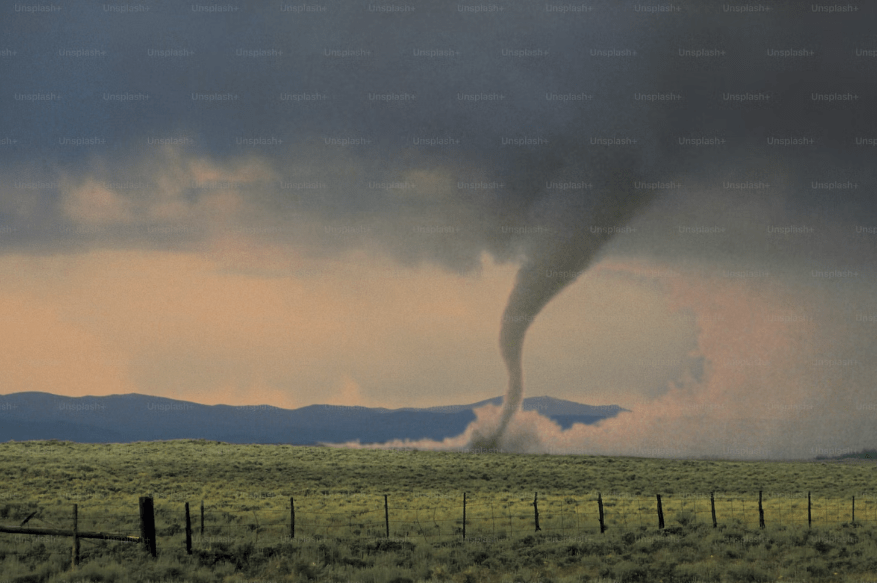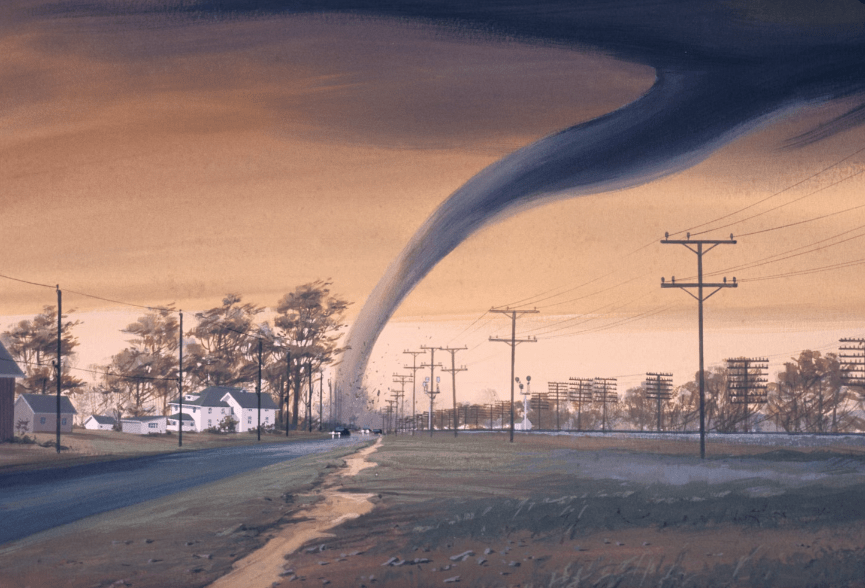Understanding Tornadoes, Thunderstorms, and Severe Weather: Essential Guide
Learn about the formation, characteristics, and safety measures of tornadoes, thunderstorms, and severe weather. Stay prepared and informed with this essential guide.
Web Desk Report
Severe weather events, such as tornadoes and thunderstorms, are natural phenomena that can cause significant damage and pose serious risks to life and property. Understanding these weather events, their formation, characteristics, and safety measures can help individuals and communities better prepare and respond effectively. This article delves into the intricacies of tornadoes, thunderstorms, and severe weather, providing valuable insights and safety tips.
Tornadoes: Nature’s Fierce Whirlwinds

What is a Tornado?
A tornado is a rapidly rotating column of air that extends from a thunderstorm to the ground. These violent weather events can occur anywhere in the world but are most common in the United States, particularly in an area known as “Tornado Alley,” which includes parts of Texas, Oklahoma, Kansas, and Nebraska.
Formation of Tornadoes
Tornadoes typically form from severe thunderstorms, particularly supercells, which are rotating thunderstorms with a persistent updraft. The key elements required for tornado formation include:
- Instability: Warm, moist air near the ground and cooler, dry air aloft create unstable atmospheric conditions.
- Wind Shear: Changes in wind speed and direction with height contribute to the rotation needed for tornado development.
- Lift: A mechanism such as a cold front or a low-pressure system that lifts the warm, moist air to higher altitudes.
Characteristics of Tornadoes
- Shape and Size: Tornadoes can vary in shape and size, from narrow funnels to large, wedge-shaped vortices.
- Speed and Path: They can move at speeds ranging from a few miles per hour to over 60 mph, often changing direction unpredictably.
- Damage: Tornadoes are rated on the Enhanced Fujita (EF) scale, which ranges from EF0 (weak) to EF5 (devastating), based on the damage they cause.
Safety Measures During a Tornado
- Seek Shelter: Move to a basement or an interior room on the lowest floor of a sturdy building.
- Stay Informed: Monitor weather alerts and warnings through a weather radio, smartphone app, or local news.
- Avoid Windows: Stay away from windows to protect yourself from flying debris.
- Cover Your Head: Use a mattress, heavy blankets, or a helmet to shield your head and neck from injury.
Thunderstorms: The Powerhouses of Severe Weather
What is a Thunderstorm?
A thunderstorm is a weather event characterized by the presence of lightning, thunder, and often heavy rain or hail. Thunderstorms can range from brief and mild to severe, with strong winds, flash flooding, and even tornadoes.
Formation of Thunderstorms
Thunderstorms form when warm, moist air rises and cools, leading to condensation and the formation of clouds. The key stages of a thunderstorm’s life cycle include:
- Cumulus Stage: Warm air rises, forming cumulus clouds.
- Mature Stage: The storm reaches its peak intensity, with heavy rain, lightning, thunder, and possible hail.
- Dissipating Stage: The storm weakens as the supply of warm, moist air is cut off.
Types of Thunderstorms
- Single-Cell Thunderstorms: Small, short-lived storms usually lasting less than an hour.
- Multi-Cell Clusters: Groups of cells moving together, producing severe weather over a larger area.
- Supercells: Highly organized storms with a rotating updraft, capable of producing severe weather, including tornadoes.
Safety Measures During a Thunderstorm
- Seek Shelter: Stay indoors and avoid open areas, tall objects, and water bodies.
- Unplug Electronics: Protect electrical appliances from power surges caused by lightning.
- Avoid Plumbing: Do not use plumbing fixtures during a thunderstorm as lightning can travel through pipes.
- Stay Informed: Keep updated with weather reports and alerts.
Severe Weather: Preparing for the Unexpected
Types of Severe Weather
Severe weather encompasses a range of hazardous weather conditions, including:
- Tornadoes: Destructive wind funnels touching down from thunderstorms.
- Thunderstorms: Storms with lightning, thunder, heavy rain, and sometimes hail.
- Hurricanes: Large, powerful tropical storms with high winds and heavy rain.
- Blizzards: Severe snowstorms with strong winds and reduced visibility.
- Floods: Overflow of water onto normally dry land, often caused by heavy rain or storm surges.
General Safety Tips for Severe Weather
- Create an Emergency Kit: Include essentials such as water, non-perishable food, medications, flashlight, batteries, and first aid supplies.
- Develop a Family Plan: Ensure all family members know where to go and what to do during different types of severe weather.
- Stay Informed: Regularly check weather forecasts and alerts, and have multiple ways to receive warnings.
- Secure Your Property: Reinforce windows, doors, and roofs to withstand severe weather conditions.
Conclusion
Understanding tornadoes, thunderstorms, and severe weather is crucial for safety and preparedness. By recognizing the signs of severe weather and taking appropriate safety measures, individuals and communities can reduce the risk of injury and damage. Staying informed, having an emergency plan, and knowing what to do during these events are key steps in navigating the challenges posed by severe weather. Whether it’s a tornado, thunderstorm, or another severe weather event, being prepared can make all the difference.



